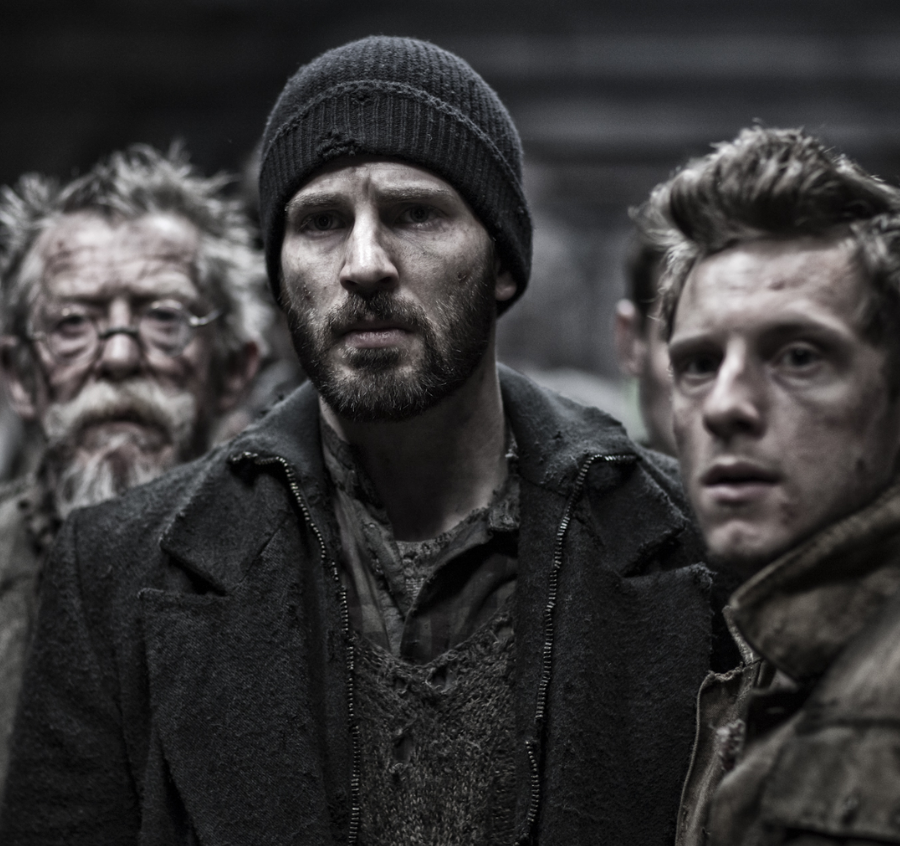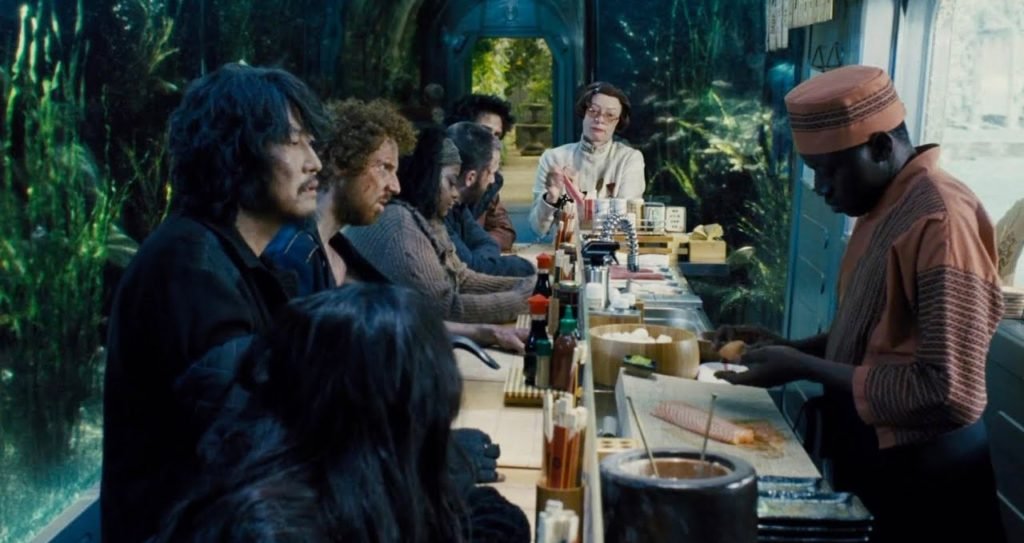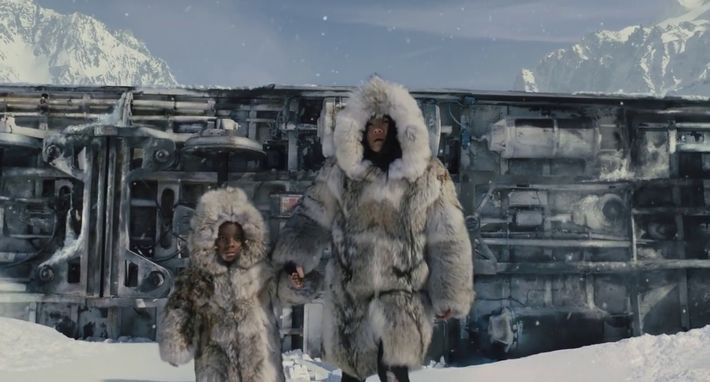An overdue film review on Bong Joon-Ho’s Snowpiercer

Bong Joon-Ho is a known director from South Korea. His critically acclaimed films have reached the Western industry due to the nature of his narratives, focusing on social commentaries. Snowpiercer is a movie that stars Song-Kang Ho and Chris Evans. It delves deeper into a fictional post-apocalyptic environment. This is where a single train travels through the planet carrying the last population of humanity.

Snowpiercer is a social commentary
The metaphorical depiction of the train is a symbolic approach to the social pyramid in the fictional “future.” The rich are at the top, or the point of the pyramid, while the poor are at the bottom.
Similarly in the film, the elite are at the front section of the train, encompassing even the middle sections. Meanwhile, the poor, or the majority of the passengers, are packed at the base of the train.
All throughout Snowpiercer, the scenes show the extreme differences in lifestyle that the rich and poor experience.
Significantly shown in Snowpiercer is the plight of the poor struggling to survive at the tail of the train. One of the aspects that tested their survival is their food rations. Only a block of brown jelly made from an unknown source. Later, they discover that it is actually made from bugs.
After multiple failed attempts to revolt, they decided to try again. They realized that the guards have no more ammunition from previous revolts. But this time they bring the captive security specialist, played by Song Kang Ho. His daughter is included as well and they help them with the door security locks.

Evans, leading the tail passengers, made way for the heart of the train. Through their journey, they witness the repugnant extravagance that the elite daily enjoy. Meanwhile, they suffer and die at the tail end of the only living civilization on the planet. This fuels their anger and they continue the fight with newfound fury. Although many perish on the way, they still make it to the end. Evans meets the co-creator of the train, Wilford. He is found in the first car of the train living just as lavishly as the other elite. The other creator, Gilliam, lived with the tail passengers.
Evans later discovers that Gilliam, despite living with them, conspired to stage the rebellion. This is to decrease the population of the tail passengers to keep the sustainability of the train. Soon, the train blows up and two of the children manage to survive the train wreck. They see a polar bear in the distance, indicating that there is life outside the train.
Bong Joon Ho’s signature

Bong Jo Hoon, the director of the film, has similar movies such as the Parasite, that highlight the enlarging gap between the poor and the rich. He makes them in such a way that agitates the audience, providing them an overlook of how disturbing it is to live in poverty, and how the rich perceive those who they deem as below them. It is an intentional portrayal of the uncomfortable, hard realities of the unfortunate.
Snowpiercer is filled with social commentaries that are blatantly shown but are relatively easy to swallow due to the fictional nature of the film.
It emphasizes the chokehold that the 1% of the population on Earth has on the rest of the world because of their greed and desire for power. How the rich disregard human lives of whom they deem as lesser people, making them expendable because they fear being in their shoes. The elite are afraid of having their power stripped down as they know that the masses have the true power once the veil of superiority gets ripped off.
In the Snowpiercer, the tail passengers are the depiction of the revolution in modern society. They portray the fight of the people, that once the majority start moving, the rest will follow.
Raine is a writer who finds comfort in mornings as they are more conducive in getting her creative juices flow- as the sun rises, so does her level of productivity. She spends a lot of her free time daydreaming about roaming the streets of Paris and even tries to learn the language of love. To put it more bluntly, she is a writer who sometimes writes.






